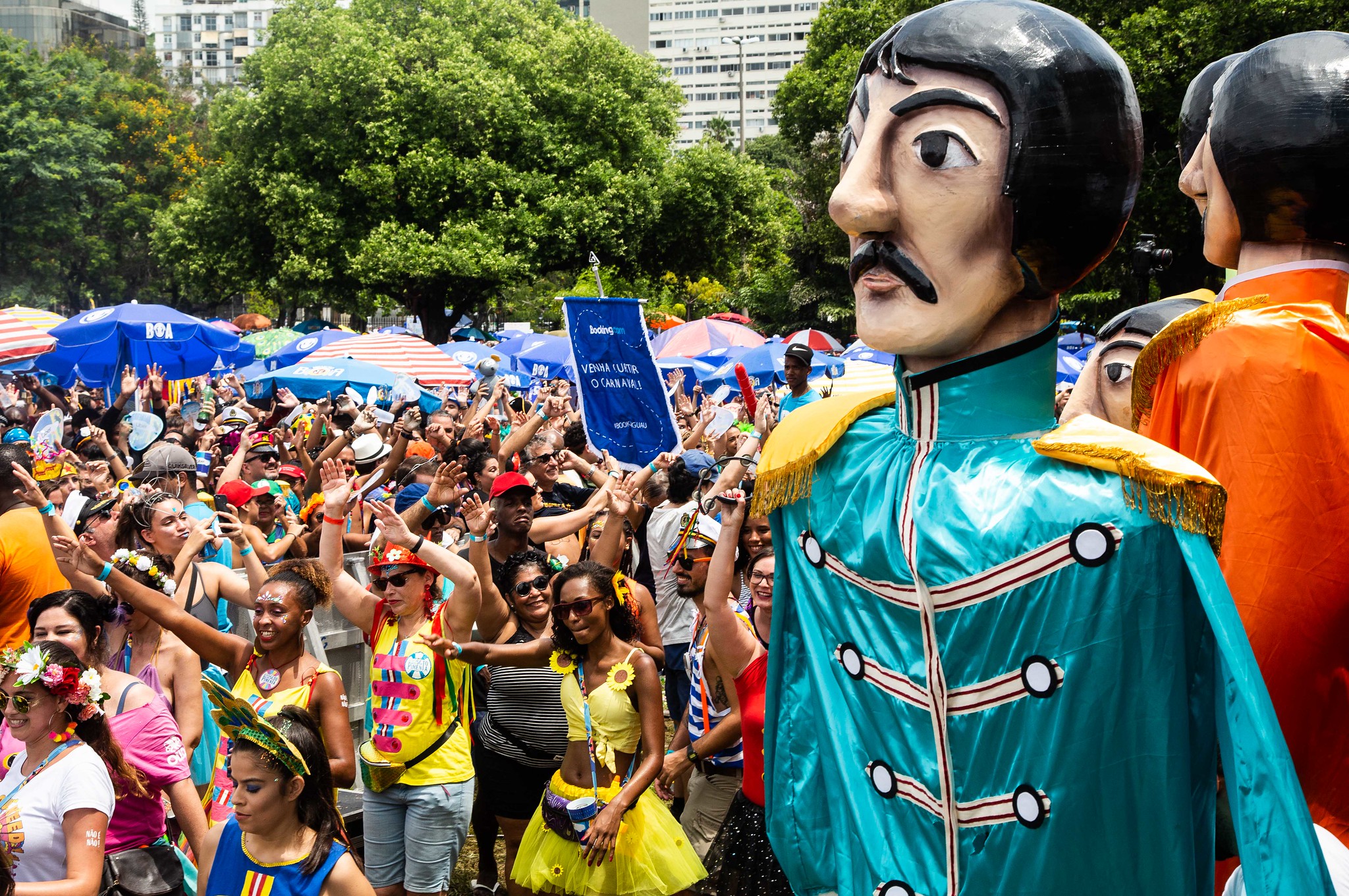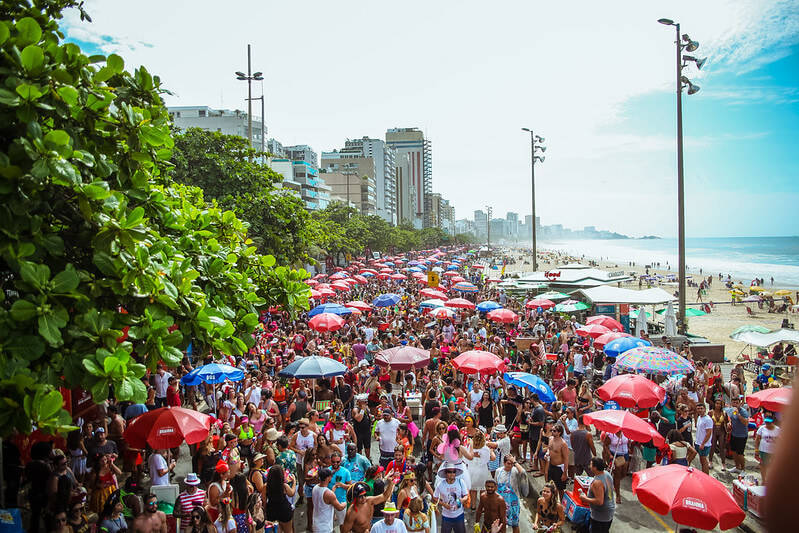Blocos and Bandas are instrumental to the success of the Carnival although they are largely unknown to the rest of the world. A reason for this is that the samba parade competition at the Sambadrome has hogged most of the spotlight to the exclusion of some of the activities. These street dancers and street bands have a long history, tracing their origins back to the 1800s during the creation of the Cordoes.
Before, these loose groups of performers mounted parades accompanied by local bass instruments to showcase not polka and other European-style dances. It was only later when samba became the country’s national anthem that these street bands adopted it making the villages dance. These groups have since constrained themselves to their neighborhoods. Blocos (street parties) have become a byword during the Carnival, particularly for tourists who find the intimate interaction with the cariocas more interesting that just be spectators at the Sambadrome.
 Credits: Riotur
Credits: RioturEach group within the neighborhood has a ready anthem which they play along with a string of other songs. Each year, they add more songs, culled from the classics of their own take of popular contemporary music, to their own collection. You can go to where the action is and attend the street parties in Copacabana, Ipanema, Jardim Botanico, Leblon and Centro.
The well-known blocos and bandas in Rio are Monobloco and Suvaco de Cristo.
A strange new dance
There was a time in the history of Brazil that samba was unfamiliar. During the colonial and even post-colonial period, the European dances were the dominant element in any party. The blocos and bandas then were a reflection of the times and so they played mostly marchinhas, a dance similar to the polka. When samba crept into the consciousness of the cariocas, the marchinhas was relegated to the background. Although today, some blocos still play that music.
The major Street Parties in Rio
There are very popular bloco parties in Rio that draw in by hundreds of thousands. Like the Cordao do Bola Preta which typically is attended by 200,000 people at a time during the Carnival. The second biggest party, Simpatia e Quase Amor, pales in comparison when compared with Cordao.
Although, when you consider the attendance it draws, or nearly 100,000 people, Simpatia e Quase Amor is not an insignificant event. This party, which is organized by Monobloco, supposedly attracts as many as 800,000 people.
Suvaco do Cristo, literally translated as Christ’s armpits, got its name because the place where it performs—the Jardim Botanico—is situated directly under the outstretched arms of Christ the Redeemer. It’s one of the popular party scenes because celebrities oftentimes attend the bloco that is held on a Sunday just before the Carnival begins.

Banda de Ipanema, on the other hand, is popular among gays. It organizes three parties every Saturday leading to the Carnival Saturday. Banda de Ipanema is also among the more well-known blocos and bandas drawing an average of 30,000 for their parties annually.
The affluent neighborhood of Leblon proudly claims Monobloco as its own. This is by no means a small group, with 120 musicians at least in a group of 200 members. As proof of its prestige, it is given the honor of ending the Samba parade at the Sambadrome. The street parties they organized in 2011 drew attracted a thick crowd of 800,000. Not too many blocos and bandas can stake that claim.
This group is very versatile because it can play anything from Samba, Congo, Xote or Quadrilha. People even troop to their rehearsals in Lapa just to get a taste of their presentation.
Choosing Blocos and Bandas
When you travel to Rio, you can’t be expected to attend all the blocos and bandas. It’s not only time-consuming but it will also drain your budget. The best thing to do is to make your decisions judiciously and follow where the flock goes.
The Carmelitas Blocos is one interesting event because all the performers are dressed as nuns. Another is the Cordao do Bola Preta because of the sense of history it offers. This is the oldest band which was organized in 1918 when the magic samba has streamed out of the African settlements and started to sweep the whole nation. As mentioned, the Simpatia e Quase Amor is also very popular although it’s fairly young in comparison to Cordao having been formed only in 1985.
This band usually performs in the affluent Zona Sul or Rio’s southern zone.
Join the street parties in Carnival
The Carnival is one of the grandest festivals in Latin America. This is the perfect time to see Brazil. But don’t just restrict yourself to watching the grand parade at the Sambadrome, because the whole Rio de Janeiro is in a party mood. Just imagine, there are 500 parties in the next Carnival that will be organized by 250 groups that are accredited by the government. So make sure to plan ahead so you can attend the major parties organized by blocos and bands.



